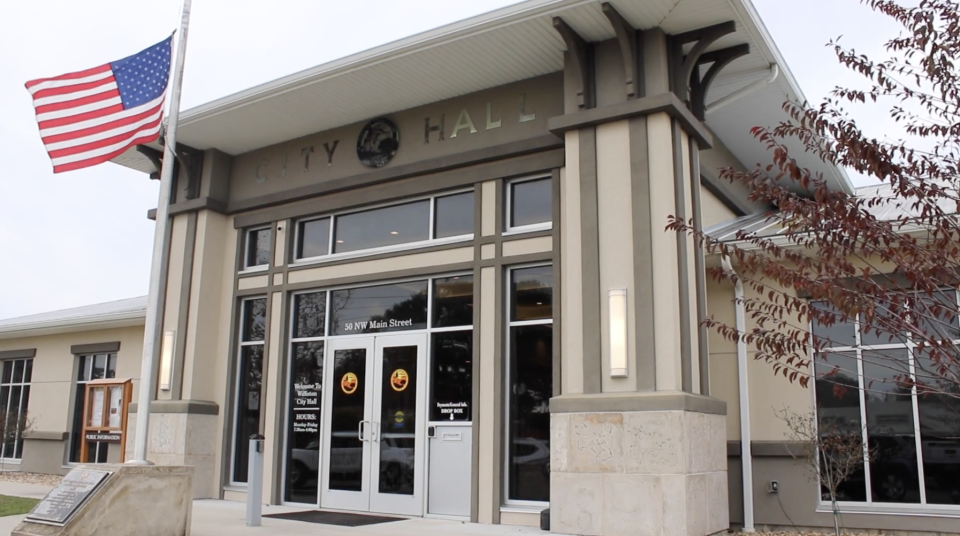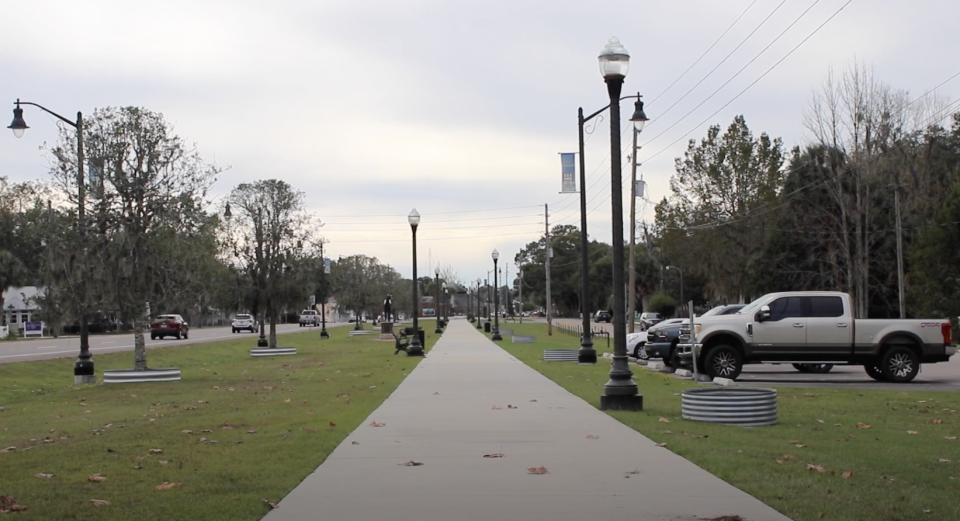Hispanics at heart of population growth in Williston
WILLISTON, Fla. — Going down Main Street in Williston, Florida, visitors would immediately notice the rundown infrastructure and building conditions.
The landmarks that make up Williston’s small town charm are the same places that graced the North Central Florida city 30 years ago.
A quaint water tower, a singular building that hosts both the Williston Police Department and the Williston Fire Department, Williston’s City Hall and several older buildings line the city’s Main Street.
For decades, the small town survived on the limited resources available to them. But an aging septic system, decreasing water supply and unreliable Internet connection are only some of the issues this growing city is currently experiencing.
The city’s population was about 2,768 residents in 2010 and only increased to about 2,976 residents in 2020, according to the U.S. Census.
Williston mayor Charles Goodman started his term just two years ago, but he was previously a city council member for about a decade.
While Goodman describes the city’s population growth over the past decade to be sporadic, he said the population's growth since the last U.S. Census report has been “uncontrollable.”
“We have a tremendous increase in people moving to our area, and we're struggling, frankly, to keep up with it,” he said.
If the current rate of the city’s population and utility usage continues to grow, Williston will have to borrow money to support a major overhaul of the city’s infrastructure.
Latino businesses: ‘Puro cash’: Latinos are opening more small businesses than anyone else in the US
Goodman predicts the city will need to build a new septic system, import water resources and increase access to high-speed internet as soon as possible.
“You either grow or you go backwards,” he said.
Williston is responsible for distributing utilities to its residents. Williston’s Public Works and Utilities Department manages the city’s water quality and the development and maintenance of the city’s sewer, water, electric and gas utility systems and streets.
The city’s septic system is working past 60% capacity. Once the city reaches 70%, Williston must start to pursue alternatives or building upon the current system, Goodman said.
Williston is well overdue for a makeover.
“Our little city limped along for 30 years or more on infrastructure that was not meant for the amount of people that we are serving,” Goodman said.
He feels there are many reasons why there has been a noticeable uptick in new residents in Williston, but the main reason is safety and security — traits he believes the neighboring larger cities of Ocala and Gainesville no longer have.
“The people are supposed to be the purpose of the government, to help people to give them the opportunity to have a possibility of having a good life and a safe place to live,” Goodman said.
The demographics of the city’s population has changed as well.
“We have some people in Williston that have been here for many generations. Good, hard working people that really don't want to see growth,” he said.
According to the 2020 U.S. Census, Williston’s percentage of non-White residents increased to about 41%.
As mayor, Goodman confirms that a large percentage of Williston’s new residents are from Hispanic backgrounds and many are primarily Spanish speakers. He is prioritizing the employment of bilingual speakers in local government agencies.
“In order to govern, you have to be able to communicate and we don't have a lot of it in our city government,” Goodman said.
Omar Rosado and his family were a few of the near 200 Hispanic residents living in the area about ten years ago.
Rosado is pastor of the only Hispanic establishment on Williston’s main street, the church Casa De Restauración Shalom. As a leader in the city’s Hispanic community, he helps anyone who comes to him for spiritual and physical assistance.
Sometimes, undocumented immigrants come to him for moral support and translation services.
“There’s a large Hispanic community, but a majority of them — I’d estimate over 70% — don’t have documents,” he said. “Many people who don’t dare to leave their houses at night for fear that a police officer might stop and deport them.”
Rosado believes the migration of Hispanic residents is prompted by local opportunities to work for farming and boats.
Judith Rosado Carrasquillo, Rosado’s daughter, followed her parents into a life of worship. She is a member of the church’s ministry and a youth pastor.
Emigrating from Puerto Rico and growing up in Williston, she found it difficult to find belonging in the mostly white and rural community. At school, she was bullied for being Hispanic and suffered verbal abuse from other students and teachers.
“My high school years were not that great,” she said. “I mean, whatever happened, it made me the person that I am today.”
Rosado Carrasquillo said she can give support and advice to new immigrants and younger people who are still facing
adversity and racism. Inspired by her parents, she decided to stay in Williston and help people who are currently trying to make a home there.
“I decided to stay here because here's where God wants them and God loves me,” she said. “I can’t go against that.”
Rosado Carrasquillo knows that it can be difficult to help undocumented immigrants, but she feels there are multiple ways to help the families that come to the church.
“Sometimes I get frustrated that we are not able to help everybody as they wish or as they need it,” she said.
Rosado Carrasquillo believes that while the church is governed by local laws, the actions of the church are also directed by the will of God.

“We also obey God and he asked us to be of blessing and help people,” Judith Rosado said.
Kiarelis Rosa is a 28-year-old social worker living in Williston. She also helps families at Casa De Restauración Shalom with documents that need to be translated or helping their immigration process.
Rosa recalls her own experience immigrating to Florida from Puerto Rico.

She was 17 years old. Neither she nor her family spoke a word of English.
Her father couldn’t leave Puerto Rico with the rest of her family, so they lived in Williston alone for some time. Her family struggled financially and they lived in public housing for years.
“My mom got a job at a McDonald's,” she said. “My mom's a very hard working woman but she faced racism herself while working there. My dad couldn't find a job. He’s Black and Hispanic, so that's even worse. Not to blame it only on racism because he didn't know how to communicate. To see your parents go through that, it's hard.”
Rosa and her younger sister attended public school in Williston. They had to learn English quickly to help their parents.
“My little sister was 6 at the time,” she said. “She would lock herself in the bathroom at school and cry her eyes out because she didn't understand anything that was going on.”
By helping families with translation of paperwork or in person, Rosa hopes to make their immigration process go smoother than her own.
Rosa said the culture and diversity of the city has gotten better, especially recently.
“There is something that we try to do as a Hispanic community is to make us known,” Rosa said. “I do believe that awareness is key for the future. If we educate the people in the community, the community will have a better understanding, and more empathy.”
This article originally appeared on The Gainesville Sun: Williston population growth spurred by new Hispanic residents

